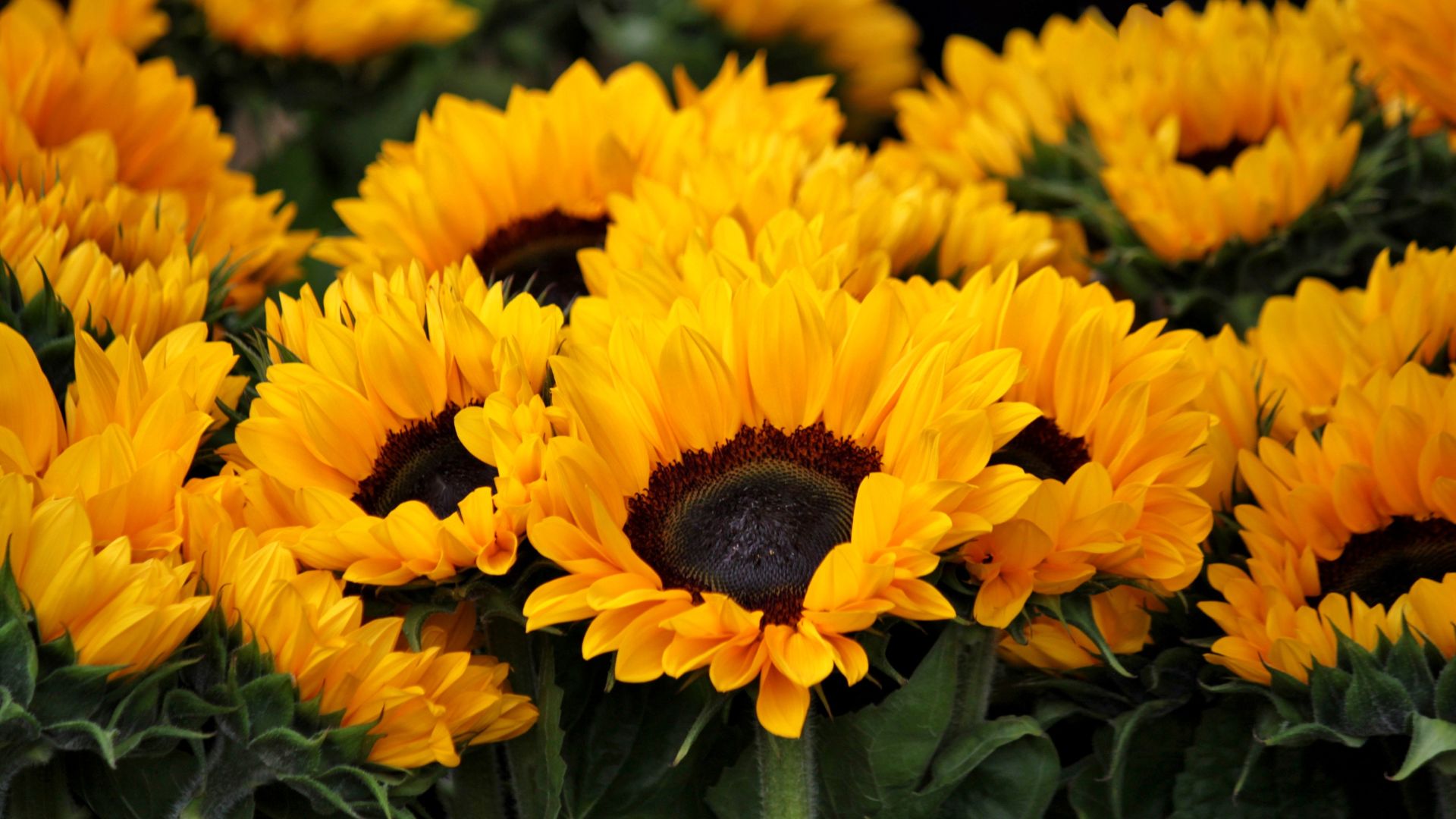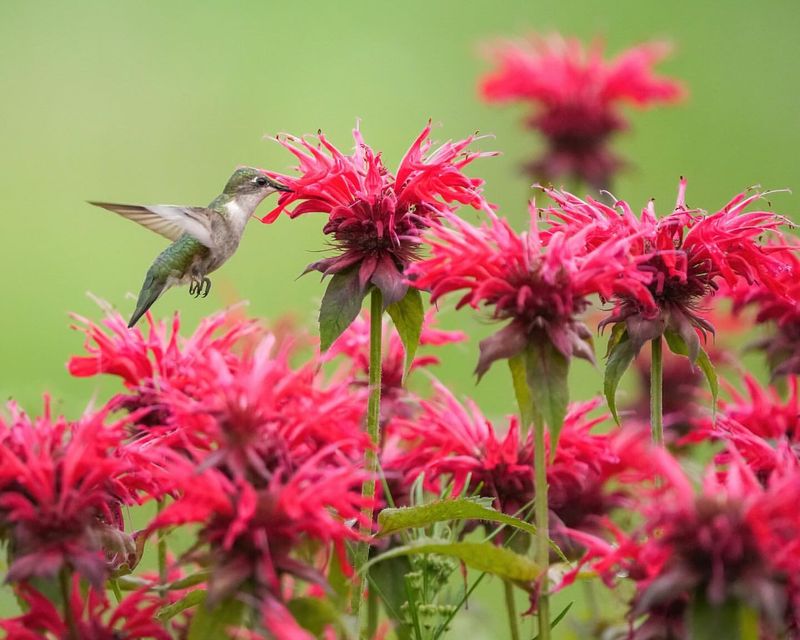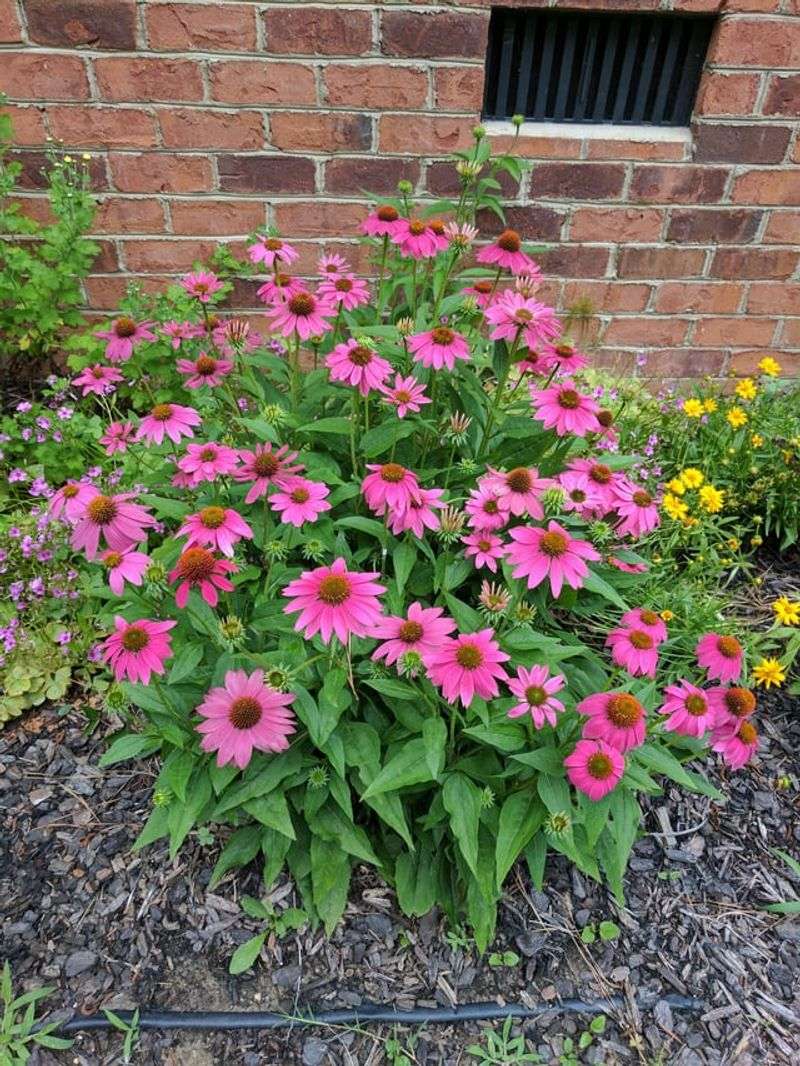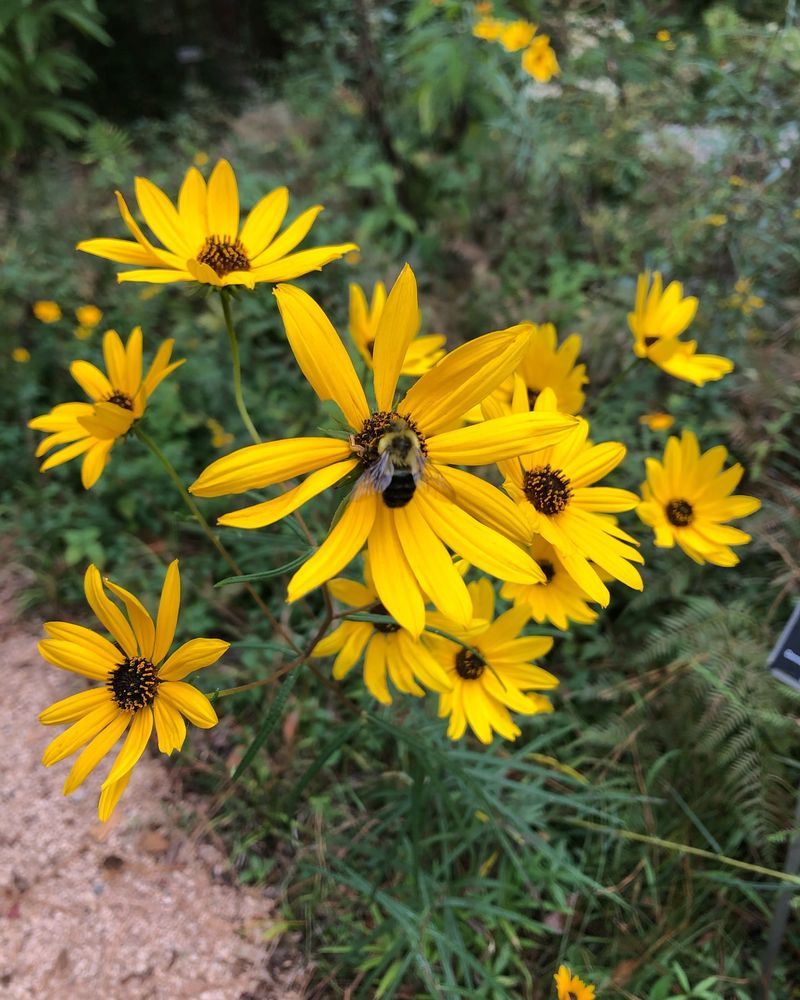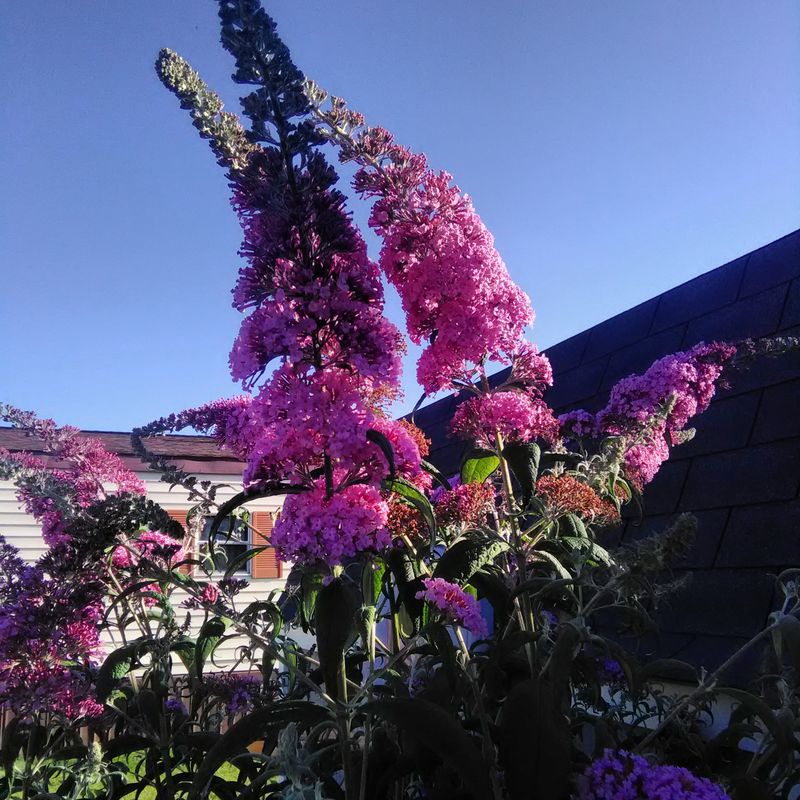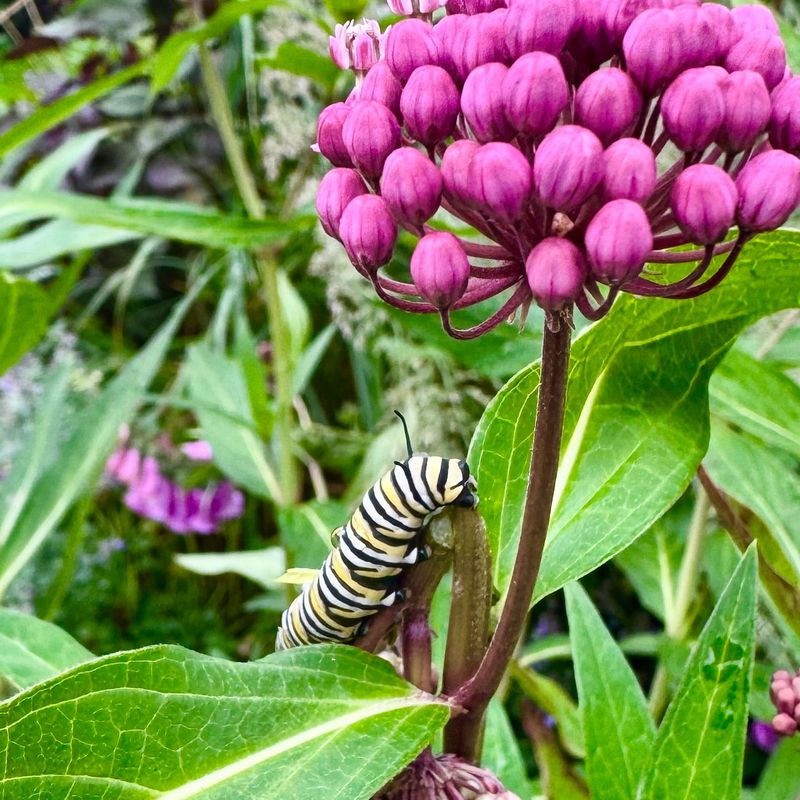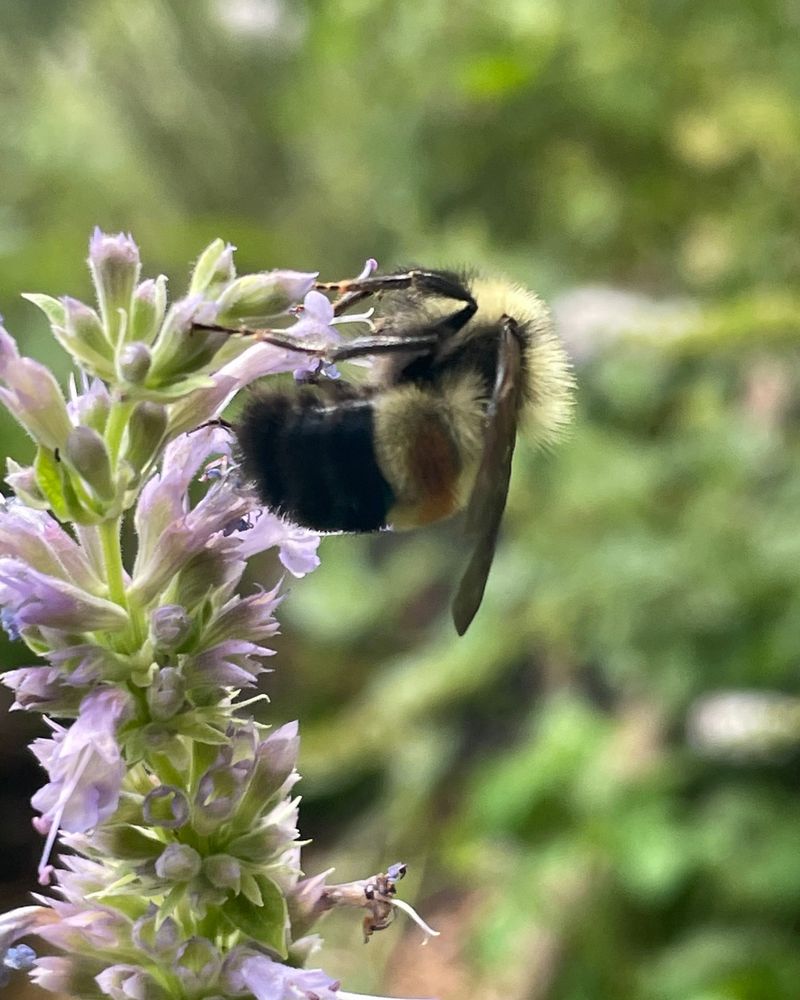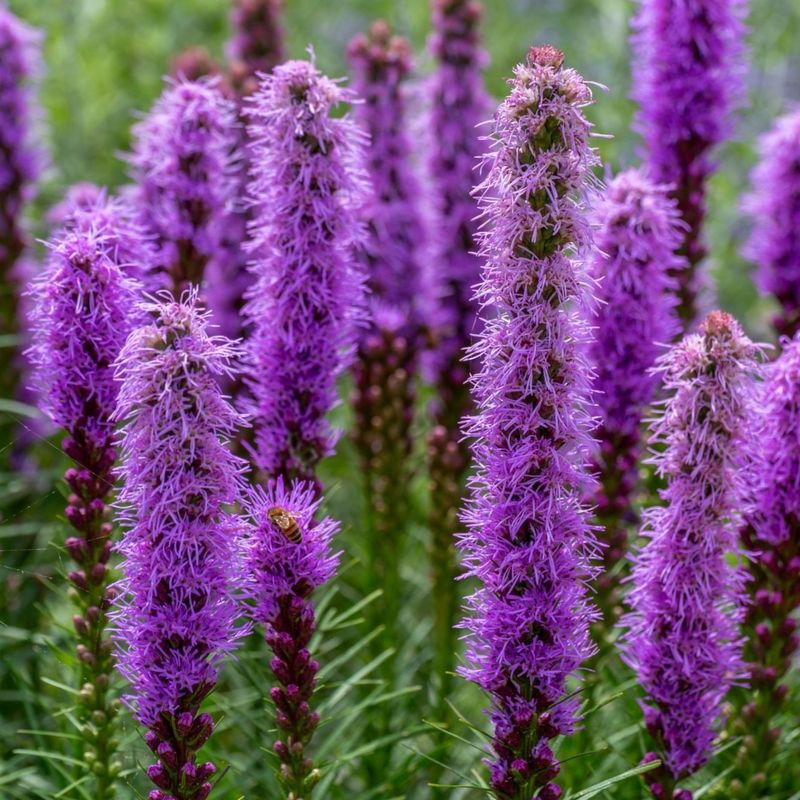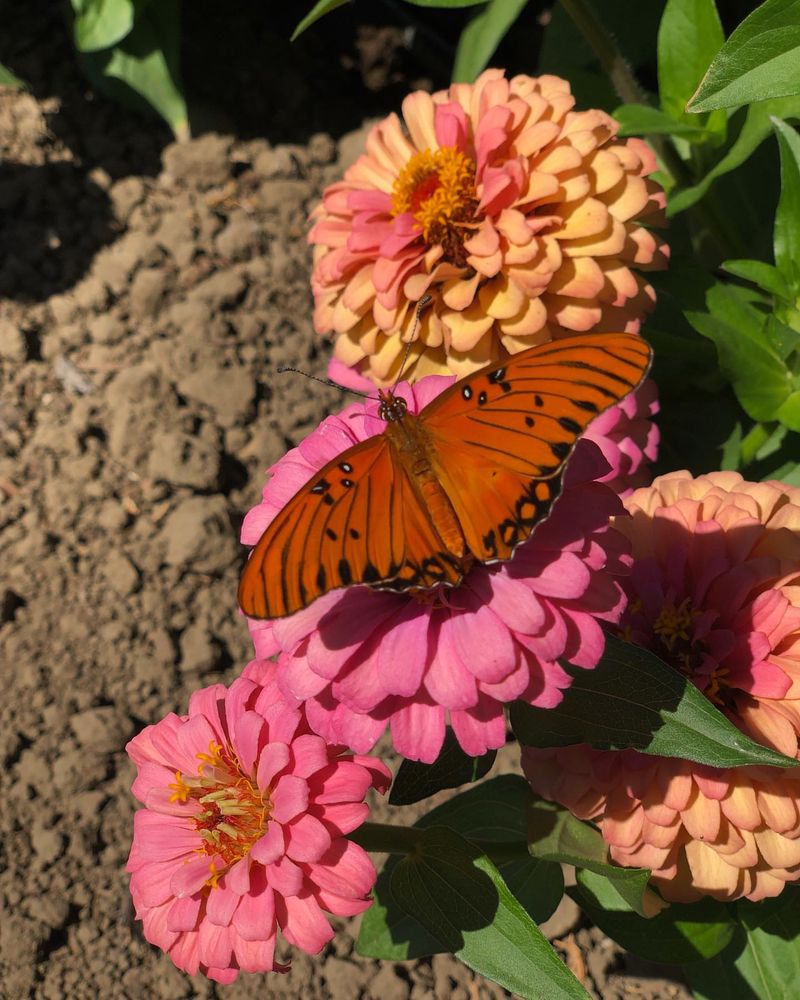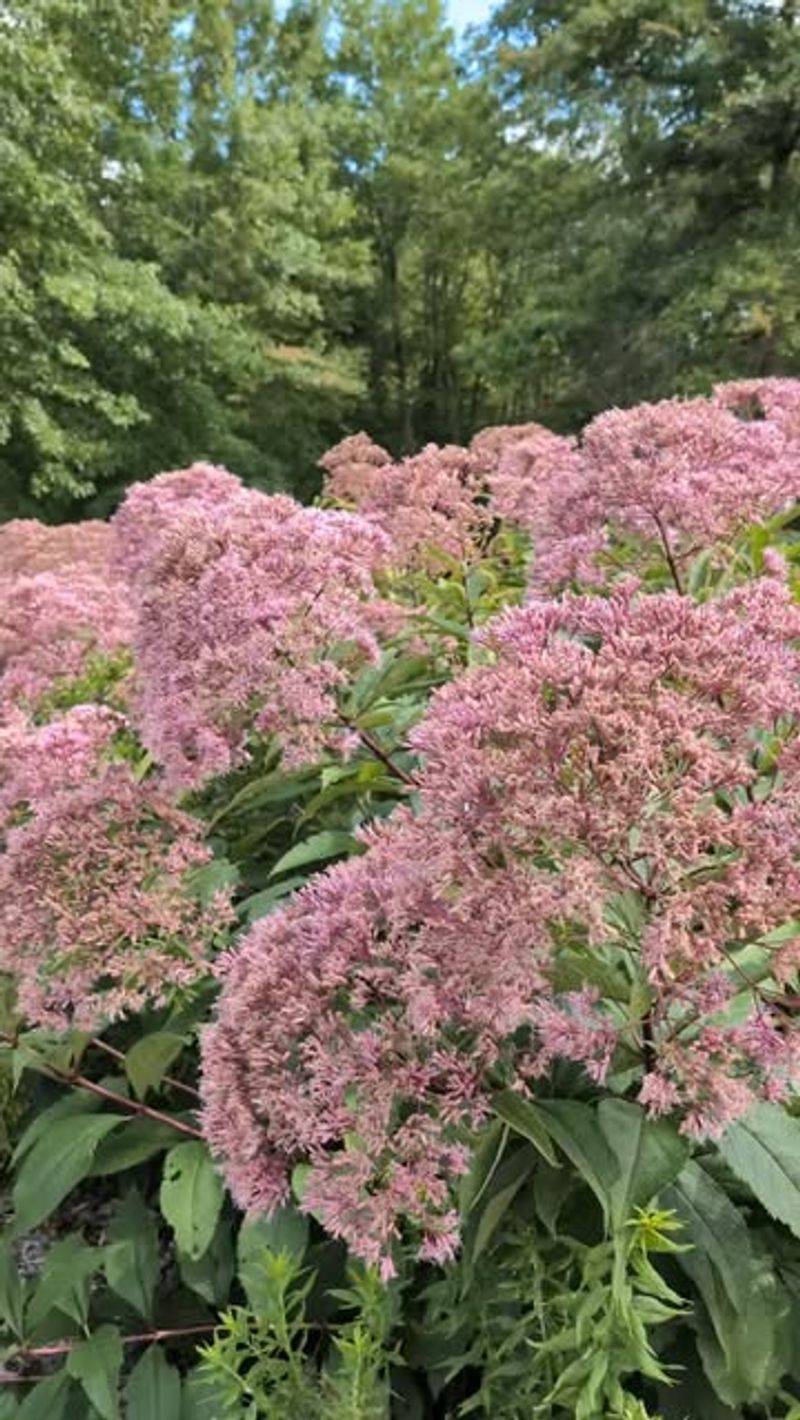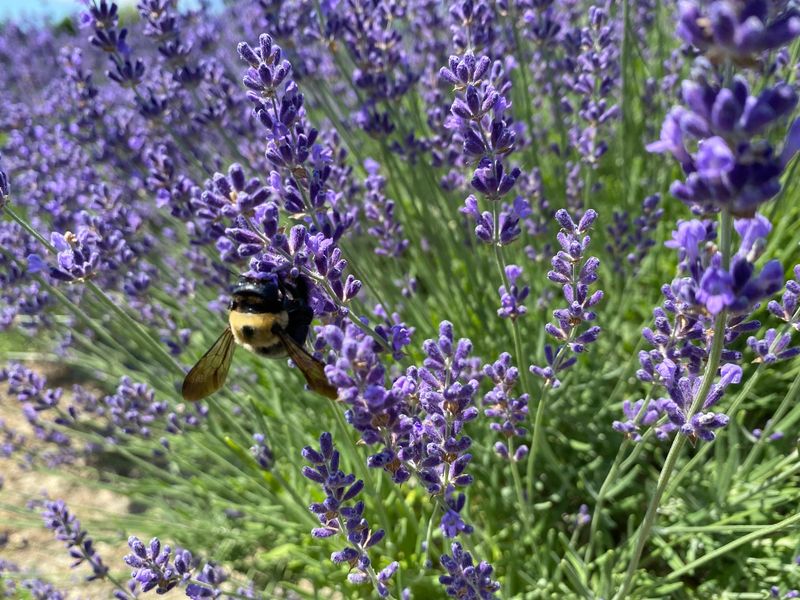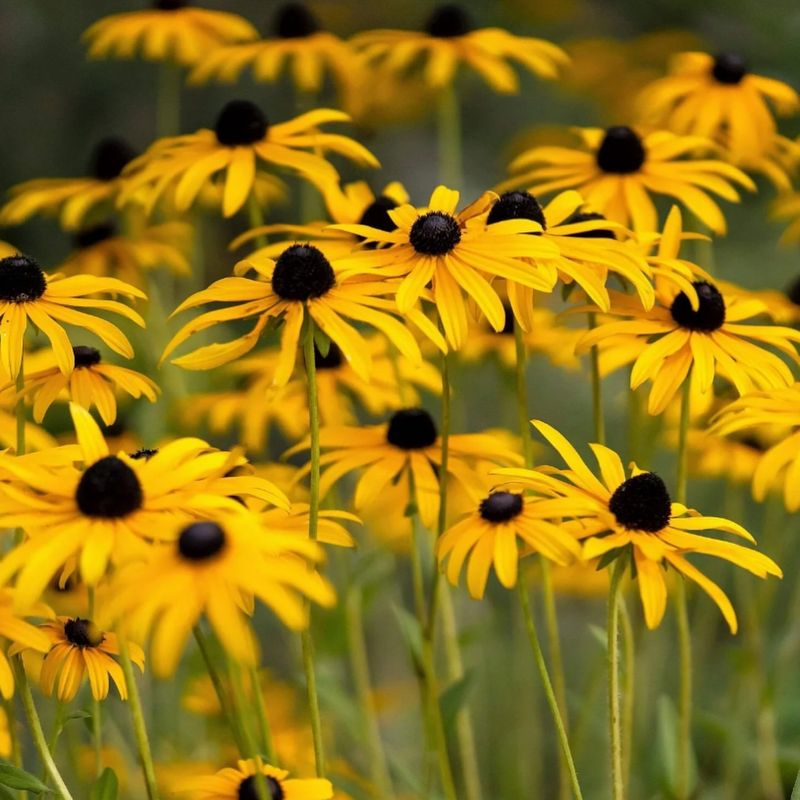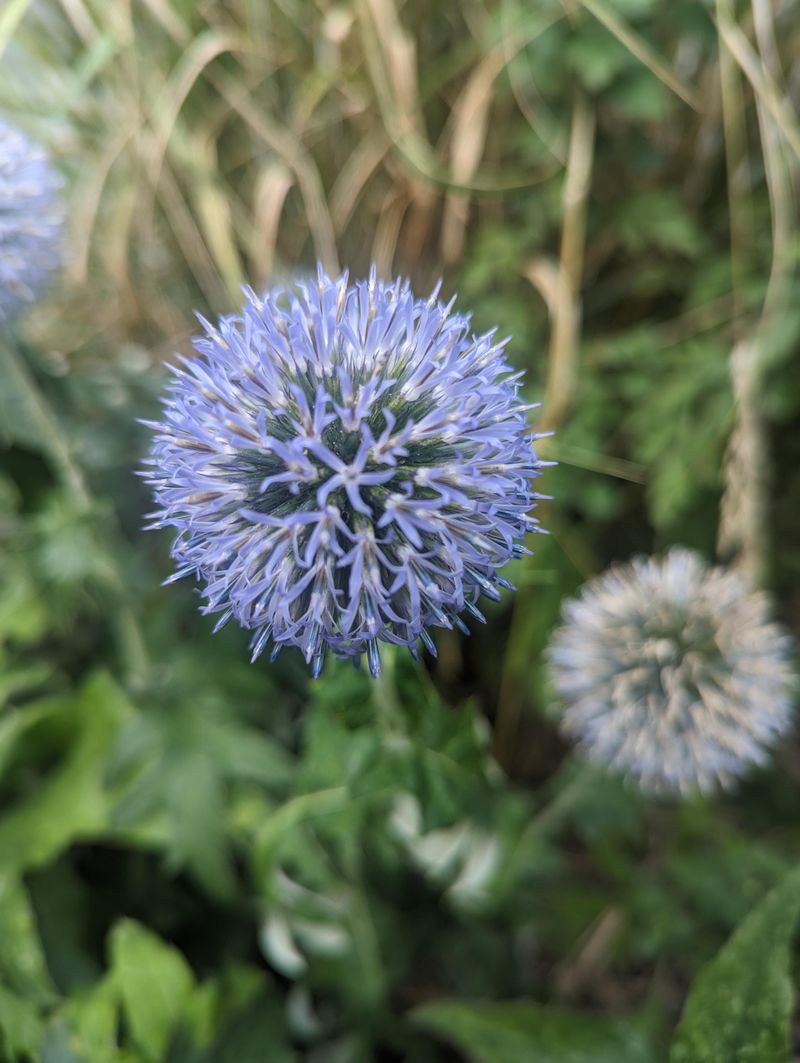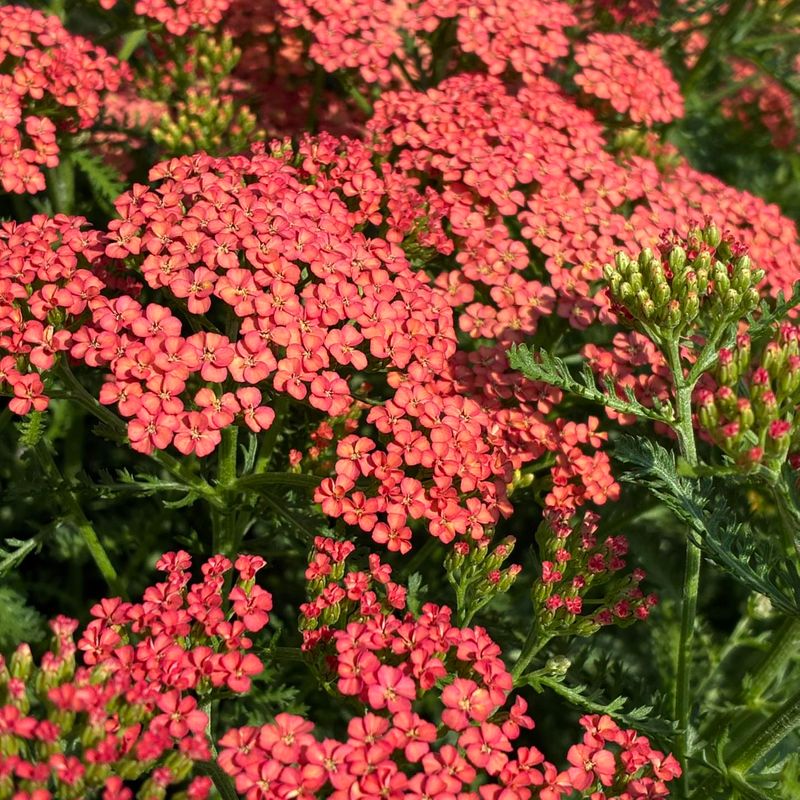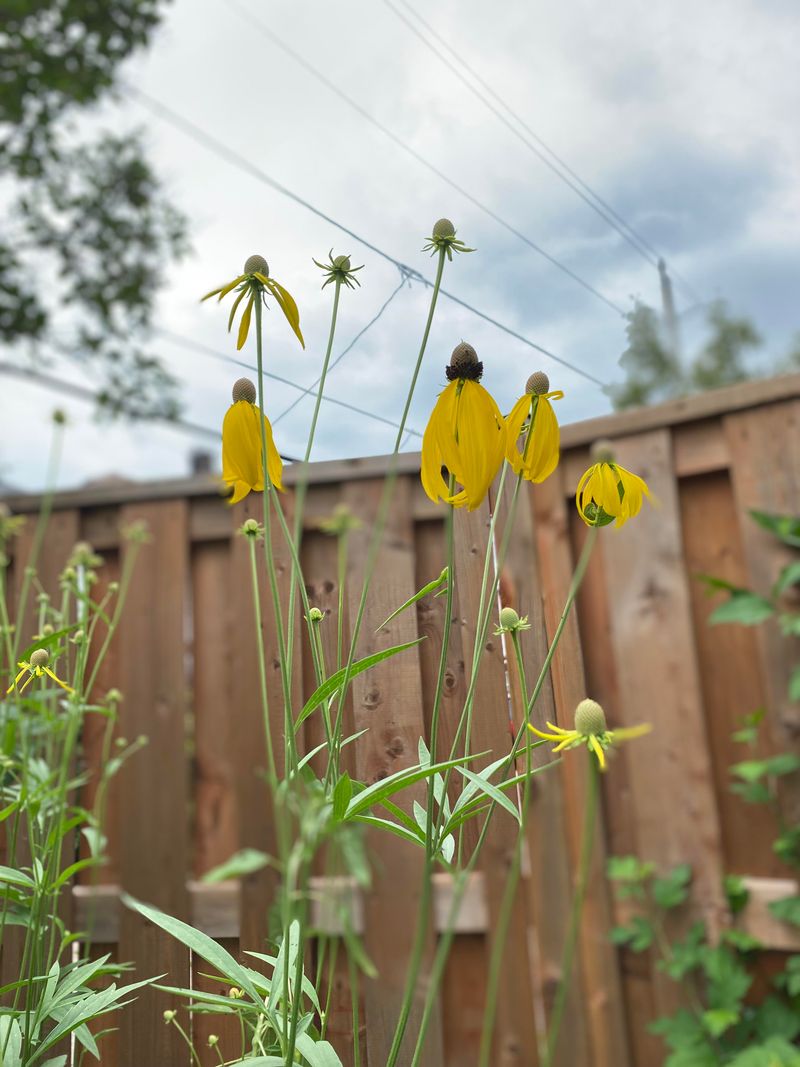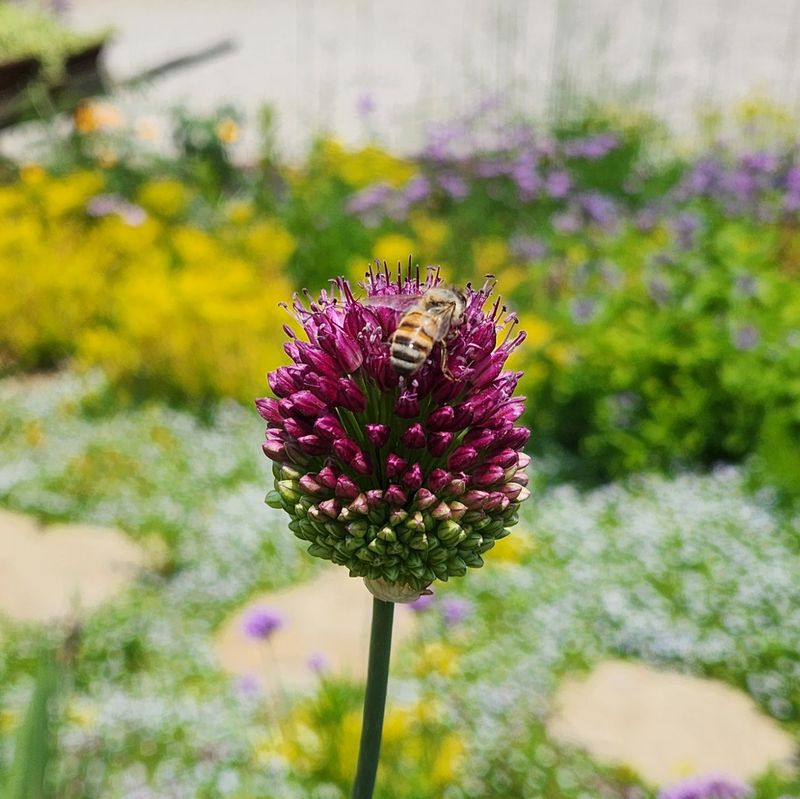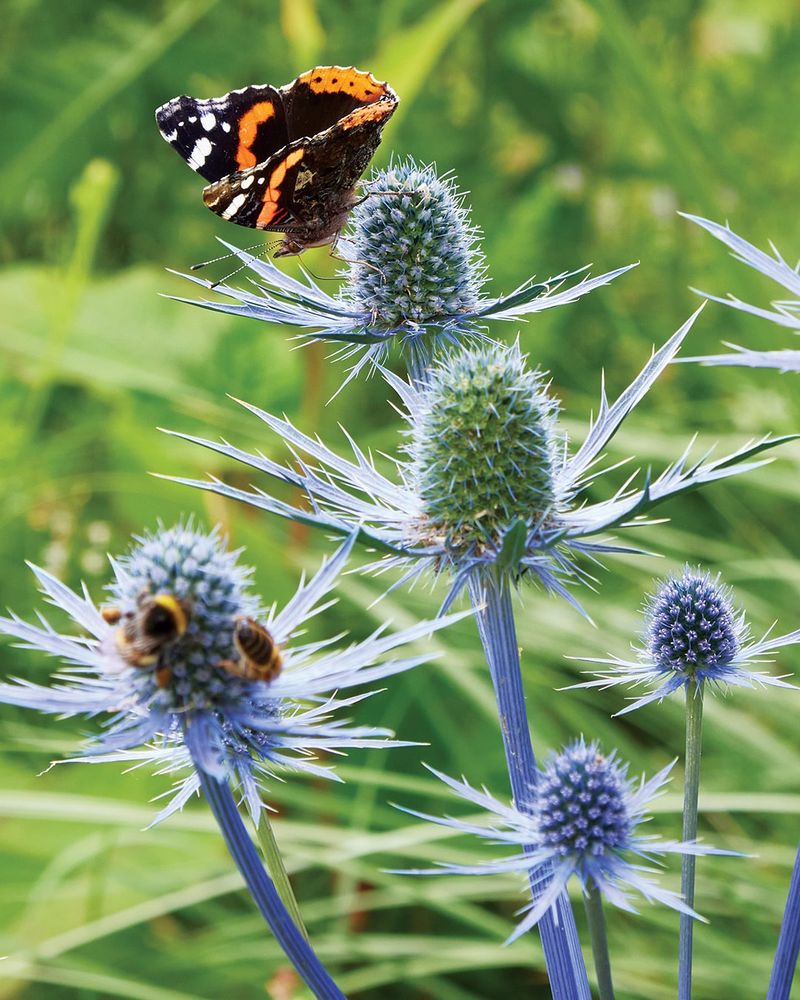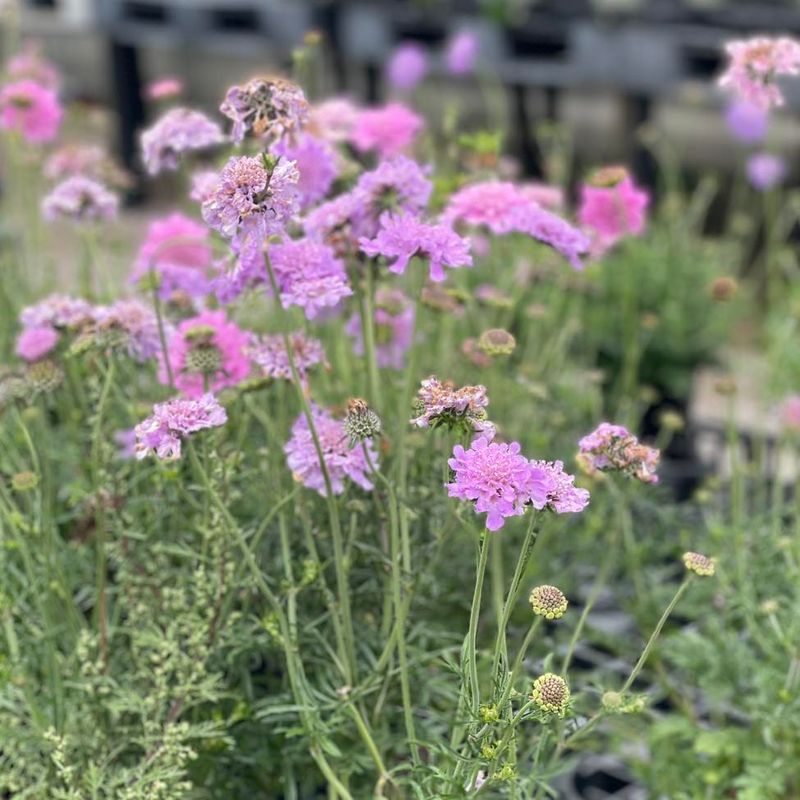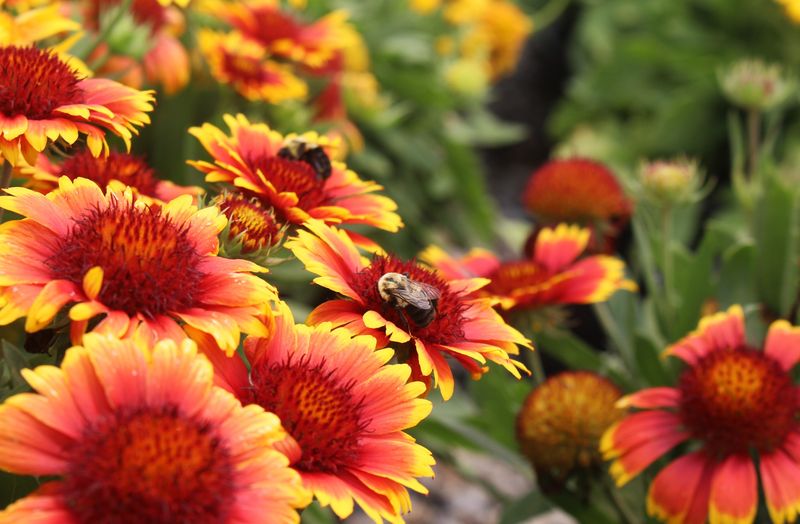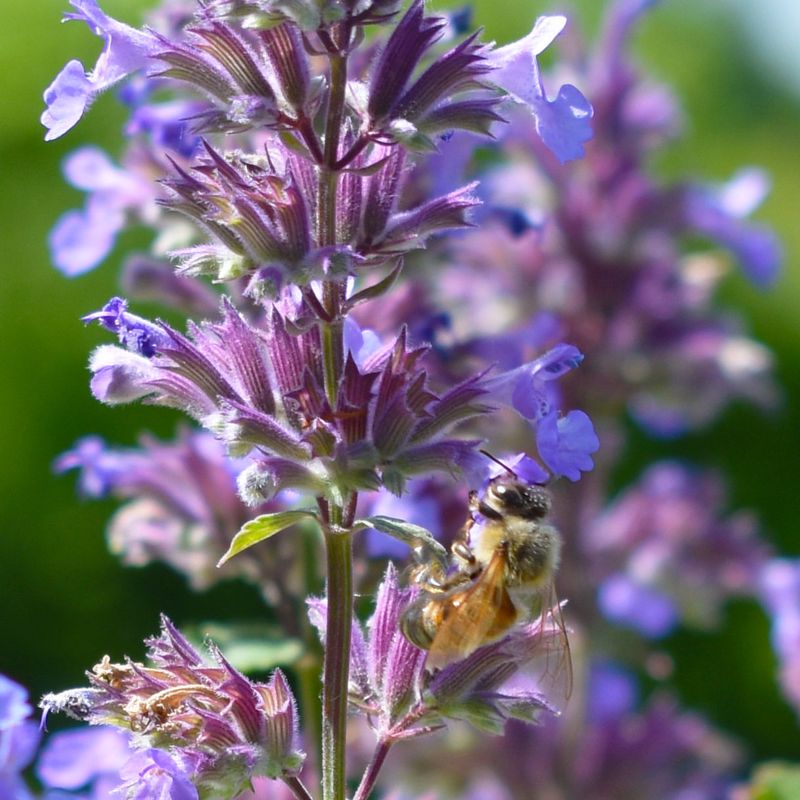July is prime time for growing—and for lending a hand to pollinators that keep our gardens (and planet) buzzing with life. As their wild spaces shrink, your backyard can become a much-needed oasis filled with color, movement, and purpose.
Planting flowers like bee balm, black-eyed Susans, and salvia offers nectar and shelter to bees, butterflies, and hummingbirds. These blooms don’t just look stunning—they’re like welcome signs to the most important visitors in your garden.
With just a few smart choices, you’re turning your yard into a pollinator pit stop. It’s a win for the environment, a joy for the senses, and a reminder that beauty can do big things.
1. Bee Balm (Monarda)
Crown-like flowers in shades of red, pink, and purple act like magnets for hummingbirds. The tubular blooms perfectly match their long beaks and provide sweet nectar rewards.
Last summer, hummingbirds visited my bee balm patch every morning without fail. This native perennial also attracts butterflies and, true to its name, countless bees.
Plant in full sun to partial shade and expect blooms from early July through August. Bee balm spreads through underground runners, so give it room or plant in containers to control its enthusiasm.
2. Coneflower (Echinacea)
Sturdy purple-pink petals surround a distinctive raised center cone that serves as a perfect landing pad for butterflies and bees. The seeds later become a goldfinch favorite.
For me, coneflowers represent the ultimate low-maintenance perennial. They’ve survived drought, neglect, and even a wayward lawnmower in my garden while still attracting pollinators reliably.
These native prairie flowers bloom from July through September if deadheaded occasionally. Their deep roots help them withstand dry spells, making them perfect for gardeners who forget to water.
3. Sunflower (Helianthus)
The massive flower heads provide both nectar and pollen, creating a buffet for bees. Beyond their cheerful appearance, sunflowers offer practical benefits for many garden visitors.
I’ve counted up to seven different bee species on a single sunflower head! Native sunflower varieties with multiple smaller blooms tend to attract even more pollinators than the giant single-headed types.
Plant in full sun and well-drained soil. Branching varieties keep producing side blooms even after the main flower is harvested, extending the feeding season for your backyard pollinators throughout July and August.
4. Butterfly Bush (Buddleia)
Long, arching flower clusters produce copious amounts of nectar that butterflies simply cannot resist. The sweet fragrance draws them in from surprising distances across the garden.
My butterfly bush became the neighborhood butterfly hotspot within its first season. Swallowtails, monarchs, and painted ladies visit regularly, often creating a fluttering display of wings that stops visitors in their tracks.
Choose newer, non-invasive cultivars that won’t spread into wild areas. These fast-growing shrubs bloom from July through fall frost if you remove spent flower heads, providing months of pollinator support.
5. Milkweed (Asclepias)
Clusters of star-shaped flowers provide essential nectar for adult butterflies while the leaves serve as the only food source for monarch caterpillars. This dual-purpose plant is irreplaceable in pollinator gardens.
The first time I spotted tiny monarch eggs on my milkweed leaves, I felt like I’d won the garden lottery! Now I leave patches throughout my yard to support their full lifecycle.
Common milkweed can spread aggressively, but butterfly weed (Asclepias tuberosa) offers similar benefits in a more garden-friendly package. Both produce beautiful July blooms that attract beneficial insects of all kinds.
6. Anise Hyssop (Agastache)
Spikes of tiny purple-blue flowers create vertical interest while emitting a pleasant licorice scent that humans enjoy and bees absolutely adore. The blooms last for weeks. Bumblebees seem particularly drawn to my anise hyssop patch.
Sometimes the flower stalks bend under the weight of multiple bees feeding simultaneously – a good problem to have in a pollinator garden! This drought-tolerant perennial thrives in full sun to light shade.
Its July-to-September bloom time bridges the gap between spring and fall flowers, providing continuous nectar during summer’s hottest days when pollinators need it most.
7. Blazing Star (Liatris)
Tall purple flower spikes grow from the top down, creating an unusual and extended blooming period that keeps pollinators coming back day after day. The fluffy texture is irresistible to butterflies.
Adding blazing star to my garden border tripled my butterfly sightings almost overnight. Their vertical growth habit makes them perfect for tight spaces or back-of-border placement.
Native to North American prairies, these tough perennials handle heat and drought with ease once established. July brings their peak bloom time, with each plant producing multiple flower stalks for weeks of pollinator feeding.
8. Zinnias
Flat, open flower faces in rainbow colors provide easy landing pads for butterflies and perfect pollen access for bees. Few annual flowers offer such reliable pollinator attraction combined with ease of growing.
My front yard zinnias have become the neighborhood pollinator hotspot. Children walking by often stop to watch the butterfly show that happens daily from July through October. Direct sow seeds after frost danger passes for the cheapest garden color available.
Cutting flowers for bouquets actually encourages more blooms, creating a win-win for both gardeners and pollinators throughout the hottest summer months.
9. Joe-Pye Weed (Eutrochium)
Massive dome-shaped flower clusters tower above most garden plants, creating a butterfly magnet that can be spotted from across the yard. The mauve-pink blooms appear in mid-July and last for weeks.
The first time I grew Joe-Pye weed, I was amazed by how it attracted butterfly species I’d never seen before in my garden. Its height (up to 7 feet) creates a dramatic backdrop for shorter pollinator plants.
Despite its name, this native perennial isn’t a weed at all. Newer compact varieties fit better in modern gardens while still providing the same nectar-rich flowers that butterflies and bees can’t resist.
10. Lavender
Fragrant purple flower spikes emerge from silvery foliage, creating a sensory experience for humans and an irresistible nectar source for bees. The concentrated nectar attracts specialized pollinators.
Honeybees make special trips just for my lavender patch. The honey produced from lavender nectar is prized for its distinctive flavor – something I learned from a local beekeeper who noticed my garden.
Plant in full sun and well-drained soil – lavender hates wet feet. English varieties bloom heavily in July, while some French types offer repeat blooming into fall, extending the feeding season for hungry bees.
11. Black-Eyed Susan (Rudbeckia)
Golden-petaled sunshine on sturdy stems, Black-Eyed Susan brings cheerful energy to midsummer gardens. These native wildflowers feature distinctive dark centers surrounded by bright yellow rays that act like landing pads for hungry bees.
Drought-tolerant and low-maintenance, they’ll bloom for weeks without fussy care. Plant them in groups for maximum pollinator appeal and visual impact in sunny spots.
Bonus: After flowering, their seed heads become natural bird feeders, attracting goldfinches and other seed-eaters. These self-seeding perennials spread naturally, creating more pollinator habitat each year without becoming invasive troublemakers.
12. Globe Thistle (Echinops)
Resembling tiny blue planets hovering above silvery foliage, Globe Thistle creates an otherworldly presence in July gardens. Bumblebees particularly adore these perfectly round, spiky blooms and will visit repeatedly throughout the day.
Despite their prickly appearance, these drought-resistant perennials are surprisingly easy to grow. Their architectural silhouettes add dramatic vertical interest while attracting a diverse array of beneficial insects.
The steel-blue spherical flowers last for weeks and dry beautifully for arrangements. Even better, deer and rabbits typically avoid them, making Globe Thistle perfect for gardens plagued by hungry four-legged visitors.
13. Yarrow (Achillea)
Flat-topped flower clusters create perfect landing platforms for tiny beneficial insects that might struggle with more complex blooms. Yarrow’s feathery foliage and umbrella-shaped flower heads come in shades ranging from classic white to vibrant reds and yellows.
Native to prairies and meadows, yarrow thrives in hot, dry conditions where other flowers surrender. The plants release a spicy, herbal scent that attracts butterflies while naturally repelling certain garden pests.
Ancient healers treasured yarrow for wound healing (its genus name honors Achilles who supposedly used it for his soldiers). Modern gardeners treasure it for its drought tolerance, long bloom time, and exceptional pollinator support.
14. Purple Coneflower’s Wild Cousin – Prairie Coneflower (Ratibida)
Imagine a flower that looks like it’s wearing a sombrero! Prairie Coneflower features drooping yellow petals surrounding an elongated center cone that resembles a Mexican hat (earning its nickname “Mexican Hat Plant”).
Hummingbirds perform aerial acrobatics around these quirky blooms while bees methodically work their way around the unusual cone. Native to North American prairies, these flowers dance in the slightest breeze, bringing movement and whimsy to pollinator gardens.
Unlike their purple coneflower cousins, these drought-tolerant natives offer a more unusual silhouette. Their deep taproots make them incredibly resilient during summer heat waves – perfect for low-water gardens.
15. Drumstick Allium
Wine-colored egg-shaped blooms balance atop slender green stems like magical lollipops in the July garden. These unusual members of the onion family produce burgundy flower heads that start green and gradually darken to rich maroon as they mature.
Honeybees buzz excitedly around these nectar-rich blooms, often covering the entire flower head in a moving mass of fuzzy pollinators. The compact size (about 2 feet tall) makes them perfect for tucking between larger perennials or edging garden paths.
Unlike their showier spring-blooming allium relatives, these summer bloomers blend naturally with other garden flowers. Their drought tolerance and deer resistance make them practically maintenance-free garden additions.
16. Sea Holly (Eryngium)
Spiky blue thistles that look like they belong underwater bring an exotic touch to July gardens. Sea Holly’s metallic blue-purple flowers and stems create dramatic focal points that stop garden visitors in their tracks – humans and pollinators alike!
Butterflies can’t resist these unusual blooms, especially fritillaries and painted ladies who will linger for hours. The architectural quality of these plants provides structure even after flowering ends, with the dried heads lasting well into fall.
Despite their delicate appearance, Sea Holly plants are incredibly tough. They thrive in poor soil and coastal conditions where salt spray would kill less hardy plants, making them perfect for challenging garden spots.
17. Pincushion Flower (Scabiosa)
Frilly blooms that resemble delicate pincushions float above lacy foliage, creating an airy, ethereal effect in summer gardens. Each flower features a rounded center cushion surrounded by a skirt of petals in shades of lavender, blue, pink or white.
Long, slender stems make these flowers appear to hover like butterflies themselves – appropriate since actual butterflies find them irresistible! The nectar-rich blooms are also favorites of tiny beneficial wasps that help control garden pests.
Deadhead regularly and these generous bloomers will continue flowering from early summer through fall frost. Their cut-and-come-again nature makes them perfect for pollinator support and flower arrangements simultaneously.
18. Blanket Flower (Gaillardia)
Fiery sunset colors painted onto daisy-like blooms make Blanket Flowers impossible to overlook in the July garden. Their vibrant red and yellow patterns mimic Native American blanket designs – hence their common name.
Heat-loving and drought-defiant, these flowers laugh at summer’s worst conditions while continuing to produce nectar for grateful pollinators. Native bees especially appreciate these generous bloomers during July’s hottest days when other flowers may reduce nectar production.
The cheerful flowers keep coming without deadheading, though removing spent blooms encourages even more flowers. For gardens with poor soil or hot, exposed locations, few pollinator plants perform as reliably as these colorful native wildflowers.
19. Catmint (Nepeta)
Clouds of lavender-blue flowers hover above aromatic silver-green foliage, creating a dreamy effect that softens garden edges. Despite the name, catmint attracts far more bees than cats – though felines do enjoy rolling in the fragrant leaves!
Honeybees, bumblebees, and smaller native bees literally queue up for these nectar-rich blooms. The plant’s extended flowering period makes it especially valuable for maintaining pollinator populations throughout summer.
After the first magnificent flush of flowers in early summer, simply shear plants back by half to trigger a second impressive bloom cycle in July. This tough perennial thrives in conditions that challenge other plants, from clay soil to partial shade to drought.

